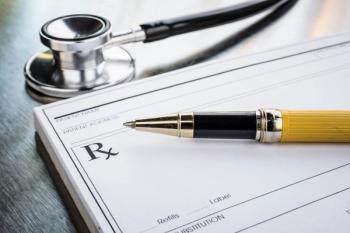
USDA labs plow ahead with $447 million plan
Ames, Iowa-This year's $104 million appropriations to upgrade laboratories at the United States Department of Agriculture (USDA) couldn't have come sooner.
Ames, Iowa-This year's $104 million appropriations to upgrade laboratories at the United States Department of Agriculture (USDA) couldn't have come sooner.
In fact, critics are charging that poor ventilation, rodent infestationand outdated buildings have hampered the ability of USDA scientists to dotheir jobs, Reuters reports.
In addition, the National Association of State Agriculture Departmentsreported that many USDA facilities had such deep problems that the systemcould not appropriately respond to "a severe animal health crisis,"Reuters says.
Ames is home to the country's most important animal health laboratories:the National Veterinary Services Laboratories (NVSL), the Center for VeterinaryBiologics (CVB), and the ARS National Animal Disease Center (NADC)-labsthat urgently need new, more modern facilities.
Fueled in part by the bioterrorism scare after 9/11 and lobbying effortsof animal health officials, USDA labs in Ames, Iowa will receive $104 millionin funding this year that will redefine the way DVMs work.
The $104 million is the first installment of an estimated $447 millionfor the USDA master plan to build new facilities in Ames over the next sevenyears.
Dr. Thomas Bunn, chief of the NVSL Bacteriology Laboratory, reports thatthe master plan is moving forward on schedule. "Construction for thelarge animal facility contracts are in place, and now we're going to spendthe $14 million to get the labs on Lincoln Ave. out of strip malls, "says Bunn.
Strip mall science?
Currently the pathobiology lab, one of NVSL diagnostic testing facilities,responsible for testing infectious diseases such as anthrax, BSE and E.coli, is located in a downtown strip mall.
The lab has been at this location in downtown Ames for 27 years. Andwhile the programs are scientifically strong, the old and crowded facilitieshave outlived their use, according to the newsletter of the United StatesAnimal Health Association (USAHA).
Aside from physical discomfort of the strip mall laboratory, there isa bigger issue: safety.
The pathobiology lab handles transmissible spongiform encephalopathies(TSEs). According to the USAHA newsletter, current safety trends requirehigher biosafety levels than this lab can permanently address in a stripmall. DVM Newsmagazine contacted Dr. Arthur Davis, head of USDA's pathobiologylaboratory, but he didn't respond to requests for an interview.
In the way
The main labs of the NADC were constructed in the early 1960s, with themain buildings of the NVSL and CVB following in the late 1970s. The constructionof the NVSL and CVB laboratories never got past phase one, leaving otherAPHIS testing and regulatory officials to find space wherever they could-usuallyin leased office space, spread out across Ames.
Still, scientists with the USDA try not to dwell on the state of currentlabs. For example, Dr. Keith Murray, director of NADC, is typically excitedabout the future USDA labs. "Even with the old facilities we continueto do good work," says Murray. "This is not just about a facility,I see the (new) facility as a catalyst. The (future) Ames facility willbe a hub for all animal health facilities across the country," Murraysays.
He adds the anthrax scare this past September was a wake-up call forthe American public. "A lot of people didn't understand our work,"says Murray. And when the new labs are completed, "we will be betterprepared to deal with the risks."
Show me the money
Funding hasn't always been so easy to secure for USDA initiatives. Andthe safety of the nation's food supply wasn't a very popular issue untilthe terrorist attacks in New York City and Washington D.C. Even with theoutbreak of foot and mouth disease in England, and the emergence of BSEabroad, the USDA did not receive the fiscal attention it deserved, animalhealth officials say. The local consensus is that the money being spentto protect the nation's food supply, and human health is money long overdue.
USDA DVMs aren't the only ones receiving new funds. Iowa State University'sCollege of Veterinary Medicine, an institution closely linked to the USDAin Ames, has received significant monies as well.
According to Dr. James Roth, an ISU professor and DVM, the school recentlyreceived a generous grant from the Centers for Disease Control (CDC) toestablish a Food Security Center at Iowa State.
The Food Security Center would focus on protecting the nation's foodsupply through educating DVMs on the latest zoonotic and foreign animaldiseases. This is essential, because small and large animal veterinariansare often the first line of defense in diagnosing and recognizing potentiallydeadly diseases.
And while the risks of diseases like BSE entering the U.S. are very low,according to a recent Harvard University study, the odds of other foreignanimal diseases introduced in the U.S. have never been greater. Roth believescontinuing education regarding diagnosis of new foreign animal diseases,for all DVMs, is an important step in protecting the country's food supply.
As it stands now, Roth believes the nation's food supply isn't all thatsecure.
"It has various points of vulnerability," he says. "Wehaven't had a problem in the U.S. for a few decades, and the U.S. has beencomplacent for too long."
Murray concurs. "As I look around, it seems the risk is at an all-timehigh, because of the massive movement of commodities (across internationalborders)," he says.
Through his work with the Office International des Epizooties (OIE),Roth continues to raise awareness across the globe about the dangers ofzoonotic diseases. "It's a hugely important problem and practicingDVMs will be on the frontlines," he says.
Newsletter
From exam room tips to practice management insights, get trusted veterinary news delivered straight to your inbox—subscribe to dvm360.




